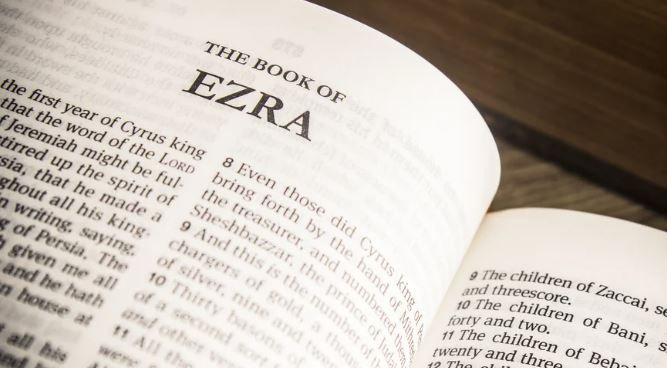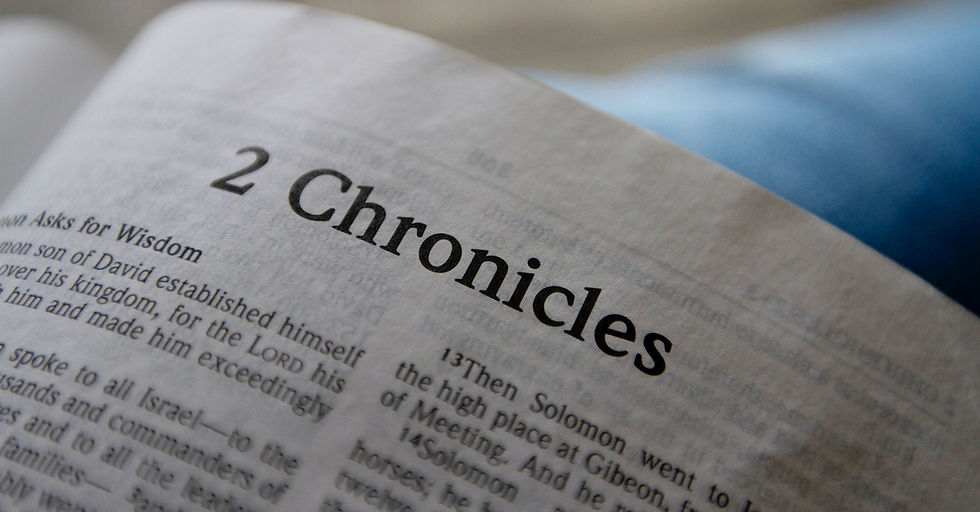Book of Ezra Summary: Rebuilding the Temple and Returning to the Word
- Bible Believing Christian

- Aug 8
- 3 min read

Book of Ezra Summary: Rebuilding the Temple and Returning to the Word
Ezra isn’t just about rebuilding bricks—it’s about rebuilding faith. The book of Ezra follows the Jewish people returning from Babylonian exile to Jerusalem and slowly rediscovering God’s Word, worship, and ways.
At first glance, it might seem like just a historical account about temple construction and Persian decrees. But underneath is the bigger story: God keeps His promises, even after judgment. Ezra reminds us that restoration is always possible, and that revival begins not with noise—but with the Word of God.
Etymology & Background
Hebrew Title: עֶזְרָא (Ezra) – meaning “help” or “helper”
Greek (LXX): Ἔσδρας (Esdras) – in the Septuagint and Latin Vulgate, Ezra and Nehemiah were often combined and called Esdras A & B
Author: Traditionally attributed to Ezra the scribe
Timeline: Covers 538–458 BC (about 80 years)
The book unfolds in two major returns to Jerusalem: first under Zerubbabel (Ezra 1–6) and then under Ezra himself (Ezra 7–10).
Chapter Movements & Key Events
Chapters 1–2: The Call to Return
King Cyrus of Persia fulfills prophecy (Isaiah 45), allowing the Jews to return and rebuild the temple.
“The Lord stirred the heart of Cyrus to put this proclamation in writing…”(Ezra 1:1, NLT)
The first wave of exiles returns under Zerubbabel, with priests, Levites, and temple servants.
Chapters 3–6: Rebuilding the Temple
Altar rebuilt (Ch. 3) and sacrifices resumed.
Temple foundation is laid—with shouting and weeping.
“Many of the older priests… wept aloud when they saw the new Temple’s foundation. The others, however, were shouting for joy.”(Ezra 3:12, NLT)
Enemies oppose the work. The building is stalled for years.
Prophets Haggai and Zechariah reignite the mission.
Temple is finally completed in 516 BC—70 years after the first temple was destroyed, just as Jeremiah had prophesied (Jeremiah 25:11–12; 29:10).
Chapters 7–8: Ezra’s Return
Ezra, a priest and skilled scribe, leads the second wave.
He comes with authority from King Artaxerxes to teach the Law and appoint judges.
“Ezra had determined to study and obey the Law of the Lord and to teach those decrees…”(Ezra 7:10, NLT)
The return is bathed in prayer, fasting, and trust in God for protection.
Chapters 9–10: Confronting Sin
Ezra discovers the returned exiles married pagan wives—violating God’s covenant.
His reaction is grief and intercession.
“I fell to my knees and lifted my hands to the Lord my God. I prayed, ‘O my God, I am utterly ashamed…’”(Ezra 9:5–6, NLT)
The people repent, confess, and take difficult steps toward holiness and restoration.
Bridge to Jesus
Ezra lays the groundwork for everything that will come next—including Nehemiah’s wall and the return of prophetic anticipation.
But more than that, Ezra reveals a God who restores people, not just places. Jesus will later walk into a rebuilt temple, but He will offer something better: Himself as the new Temple.
How Ezra Points to Jesus
1. The Decree of Cyrus → The Greater King’s Decree
Cyrus set the people free with a royal decree. Jesus declares ultimate freedom from sin.
“So if the Son sets you free, you are truly free.”(John 8:36, NLT)
2. The Temple Foundation → The Cornerstone
The temple was rebuilt on an old foundation. Jesus is the new foundation, the cornerstone of our faith.
“Christ Jesus Himself is the cornerstone.”(Ephesians 2:20, NLT)
3. Ezra the Scribe → Jesus the Word Made Flesh
Ezra read and explained the Word. Jesus is the Word.
“So the Word became human and made His home among us.”(John 1:14, NLT)
4. Repentance → Restoration in Christ
The people confessed and repented. Jesus offers lasting forgiveness and transformation.
“Now repent of your sins and turn to God, so that your sins may be wiped away.”(Acts 3:19, NLT)
Application – What Should We Do With This?
1. Get Back to God’s Word
Ezra didn’t come with political power—he came with the Law of the Lord. If you want revival, start with the Bible.
2. Don’t Be Afraid to Rebuild
The work was hard, resisted, and slow. But they kept going. Your spiritual life can be rebuilt, too. It’s not too late.
3. Take Sin Seriously
Ezra wept when he saw compromise. Do we? Or have we grown numb?
4. Trust God With the Journey
They fasted and prayed for protection rather than asking the king for soldiers. God got them home. He still does.


